Cold emailing has changed a lot since its early days. So did the definition of an effective cold email campaign. Let’s see how to approach cold emailing to get the most out of it in 2020. That’s why I’ve analyzed Woodpecker database to provide you with cold email benchmarks for comparison.
How do we measure success in cold emailing?
When do you consider your campaign as successful? And what does success mean in terms of cold emailing in general?
Since cold emails are a means to start a conversation, the response rate is usually considered to be the metric that determines the success of a campaign. Does it mean that you need to achieve a 100% reply rate to call it a success? Is it even possible?
Having 100% reply rate is a rather idealistic scenario, but you can get pretty close, provided you do your homework with prospecting and put some effort in A/B testing. Experience comes with time, tests and analysis. The more campaigns you send and the more approaches you try, the higher the probability that your emails will win your prospects’ attention.
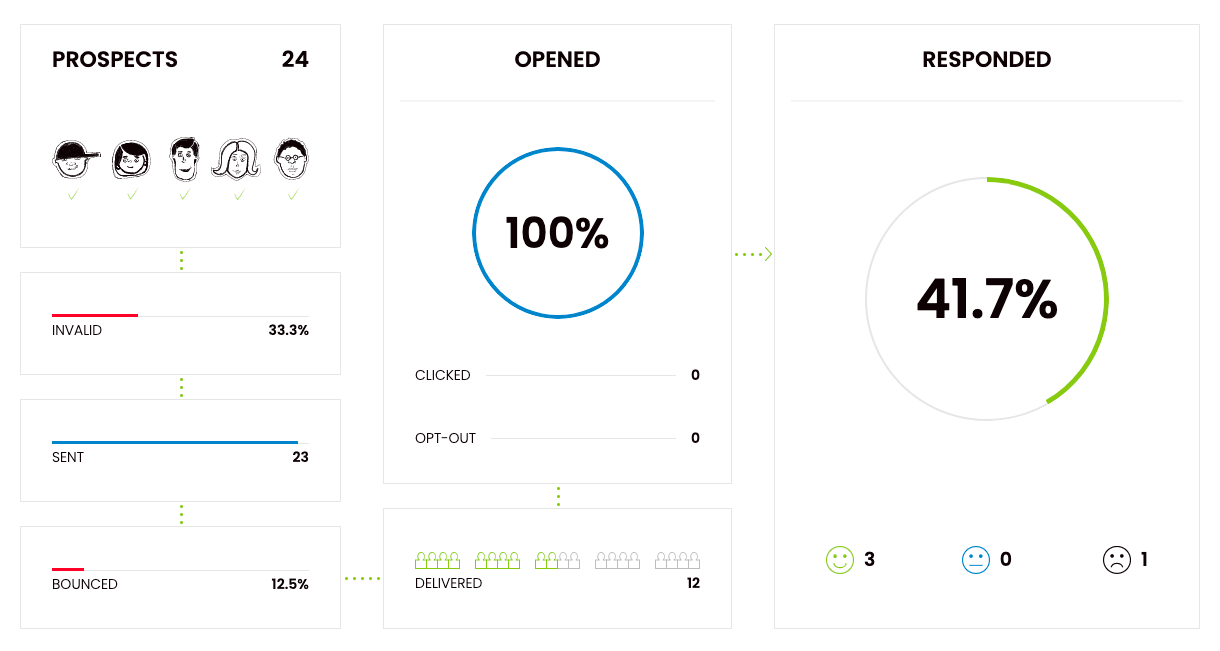 There are two processes you need to master to improve your reply rate. First one is finding the right prospects. To do prospecting better, you need to keep your ICP updated. The other process is testing the performance of various versions of an email copy. Don’t settle for one version for too long. Change your approach from time to time and monitor how it impacts the reply rate.
There are two processes you need to master to improve your reply rate. First one is finding the right prospects. To do prospecting better, you need to keep your ICP updated. The other process is testing the performance of various versions of an email copy. Don’t settle for one version for too long. Change your approach from time to time and monitor how it impacts the reply rate. So how do you know whether you’re on a good track to achieve success? The assessment is easier when you have some reference point. Take a look at the benchmarks I’ve prepared and compare your results with the average stats to make sure you’re on the right track for success.
What are the cold email benchmarks?
I’ve analyzed over 26 000 campaigns, which size ranged from 11 to 1000+ prospects. The sample included industries such as recruitment, lead generation, software houses or digital agencies from all around the world. I’ve taken a closer look at the average open and reply rates and how the level of personalization impacts these metrics. Also, I’ve checked the correlation between the size of a prospect base and the reply rate. Let’s see what I’ve found out.
Personalization pays off
For the sake of this analysis I distinguished three levels of personalization:
- no personalization – 0 snippets,
- basic personalization – including either {{COMPANY}} or {{FIRST_NAME}} snippets,
- advanced personalization – including other snippets than the ones mentioned above.
I found out that 84% of all the analyzed campaigns are personalized, 30% of which include advanced personalization beyond {{COMPANY}} and {{FIRST_NAME}}. This could include {{TITLE}}, {{WWW}} or a custom snippet. Most often the snippets are used to personalize email copy – that’s the case for around 83% of the cases. 44% of the campaigns I looked at had a personalized subject line.
Let’s examine how these numbers translate to the average open and reply rate per campaign size and industry.
What’s the average open rate of personalized cold email campaigns?
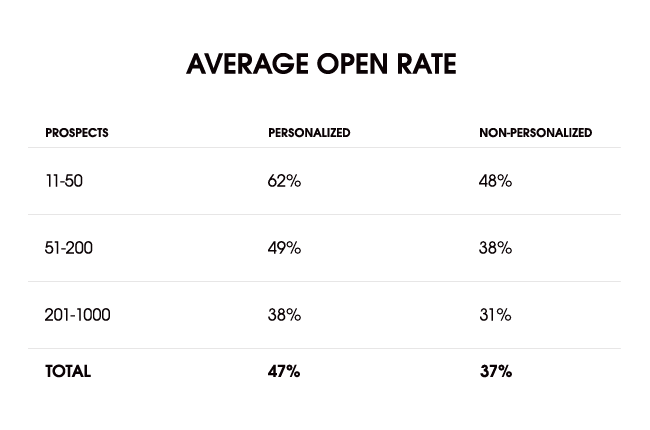
Campaigns of all sizes get better results when the email subject line is personalized. The average open rate of campaigns with a personalized subject line is 10% higher than with the non-personalized one. That’s quite a difference, isn’t it?
And what’s the average cold email open rate when we distinguish between advanced and basic personalization?
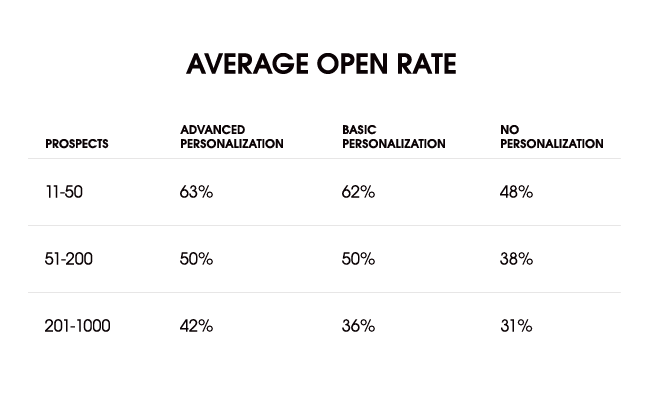
Emails with custom snippets have a slightly higher open rate in comparison to the ones personalized on a basic level.
And what is the correlation between personalization and the reply rate?
What’s the average reply rate of personalized cold email campaigns?
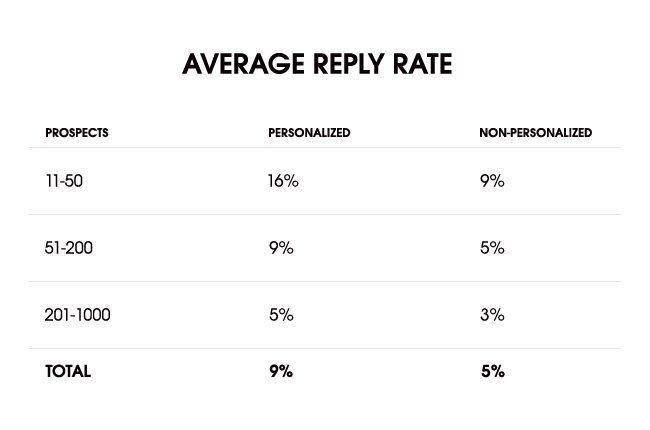
In general, personalized campaigns achieve almost twice as high reply rate than the non-personalized campaigns. That’s a huge difference.
Does advanced personalization increase the average reply rate, like in the case of an open rate?
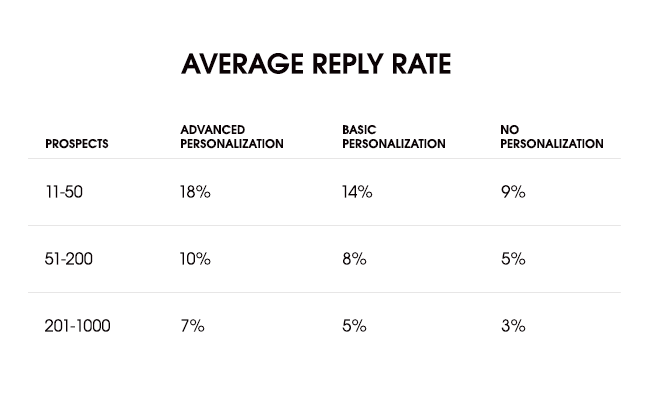
By looking at the stats above, we can conclude that advanced personalization definitely does increase the average reply rate. Custom snippets allow for creating more unique and better-tailored messages, so that’s why prospects reply to them more often.
In general, from what I’ve observed, the smaller the campaign, the more targeted it is and the better results it brings. The conclusion is that a lean approach to cold emailing is much more effective. It’s easier to personalize the email copy and tailor it to smaller segments of prospects than create one that equally fits the needs of hundreds of individuals. In cold emailing segmentation is as important as personalization.
There’s also a visible tendency for the open and reply rates to be higher for campaigns with advanced personalization, that is including snippets other than {{FIRST_NAME}} AND {{COMPANY}}. That matches the trend for the human-to-human approach as prospects are tired of generic robot-like emails and expect being treated in an individual way. Also, from the point of deliverability, emails with more diverse content have a higher chance to land in prospect’s main inbox, instead of a spam folder or under a promotions tab.
Now let’s see have a closer look at how follow-ups impact your campaign results. Some of you may remember that I’ve made a similar research about a year ago (you can read it here). Has anything changed since then?
How do follow-ups impact cold email open and reply rates?
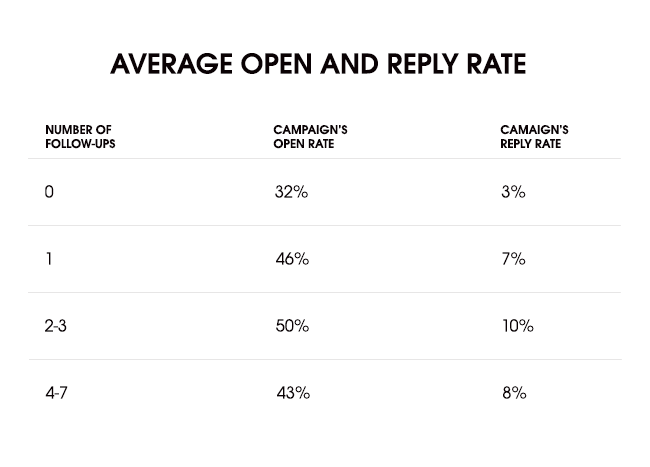
The numbers show that campaigns with 2-3 follow-ups get the highest open and reply rates. It proves that 2-3 follow-ups is still the optimal number. Have in mind that these stats are the average for small and medium-sized campaigns, with minimum of 11 prospects.
What is an average cold email open and reply rate by industry?
Now let’s check what are the cold email benchmarks for some of the industries.
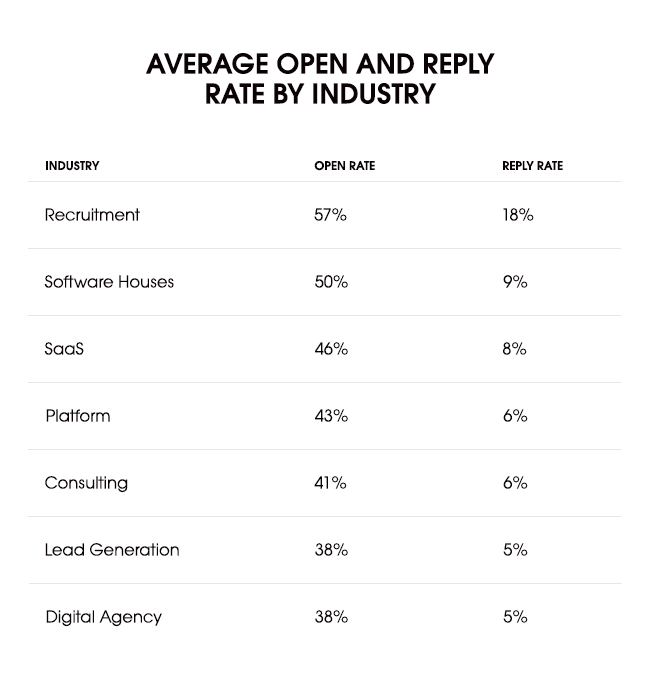
How are your campaigns doing in comparison? If you’re close to or above the average scores – congrats! If your stats are slightly off, you should perform some A/B tests to find out what could be improved. Here are some ideas for what you could test:
My open, reply or interest cold email metrics are low, what can I A/B test?>>
Also, remember not to compare between industries, because each of them has a different target group. Digital agencies may not achieve such a high reply rate as recruitment companies simply because their cold emails have a different purpose.
What will the future bring?
The trend for personalization grows stronger and stronger. These days people expect perfectly tailored communication with a lot of human touch. Nobody wants to receive generic, robot-like messages anymore. The demand for high-level personalization transfers to the sales world as well. Given this tendency, we can assume that communication adjusted to the prospect’s engagement will most likely be the next turning point in the cold email strategy for the upcoming years.
What new novelties may appear in the salesperson’s toolkit? Follow-ups triggered by the recipient’s action with copy adjusted to their interest level, advanced personalization options, email sentiment analysis, multichannel approach are just a few possible game-changers that may revolutionize the outbound sales in the near future.
READ ALSO
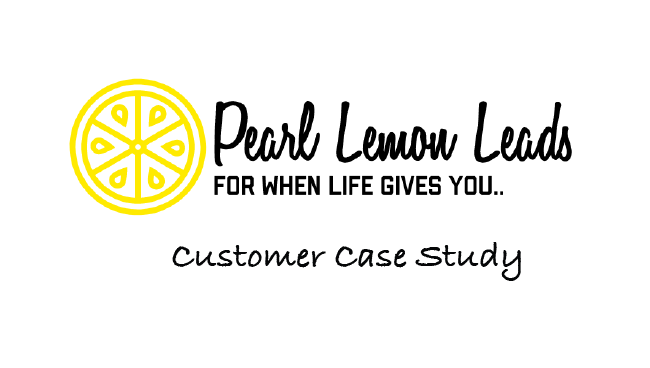
Customer Case Study: How Pearl Lemon Leads Grows on Personalized Emails
Would you like to meet one of our clients and get to know what their lead generation strategy is? Deepak Shukla from Pearl Lemon Leads, a lead generation agency, shares how his team uses Woodpecker in their daily work. Keep reading to get an insight into how they approach their prospective customers.

10 Factors that Make Our Cold Emails Work (or Not)
If you're sending cold emails, you know that sometimes your messages work amazingly well, sometimes they work OK, and sometimes they don't work at all. And whether your outreach works great, or it hardly works at all, there's always a reason for that. Actually, in most cases, there's a whole collection of reasons for that. Here's a list of 10 factors that you may want to check to discover the cause of your campaign's success or failure, and to improve the effectiveness of your emails in general.
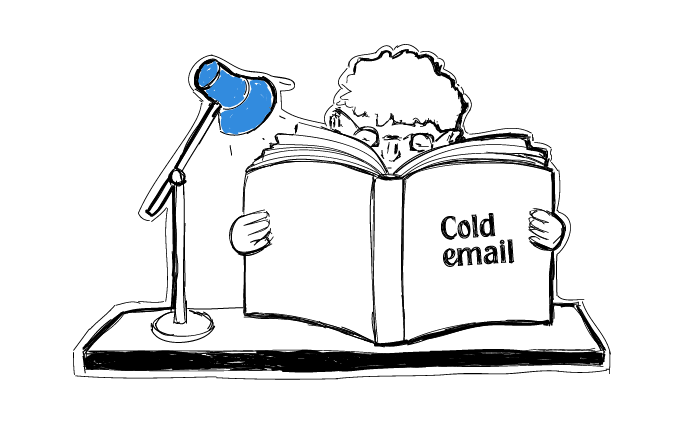
A Comprehensive Guide to Cold Email
This week we have a little special. I've been writing about cold emails for over 2 years. Last week I realized that I've written over 100 posts on this blog so far. That's a lot of material. So this week I decided to prepare a kind of a table of contents, so you have a place on this blog where you can easily and quickly find what you're looking for. Plus, maybe it will allow you to discover some posts you haven't read before. Check out the collection that makes a comprehensive guide to cold email.

